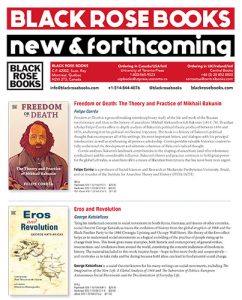To Make It Right
To Make It Right examines the significance of words said and unsaid, as the speaker navigates the relationship between her family and heritage in a modern world. In coming to terms with past grievances and uncovering the harsh reality of religious persecution, Hales creates strong images that resonate throughout the collection. First-time and experienced readers of Hales will find her command of language succinct yet lyric, an enjoyable experience.
To Make It Right examines the significance of words said and unsaid, as the speaker navigates the relationship between her family and heritage in a modern world. In coming to terms with past grievances and uncovering the harsh reality of religious persecution, Hales creates strong images that resonate throughout the collection. First-time and experienced readers of Hales will find her command of language succinct yet lyric, an enjoyable experience.
Hales carefully divides the collection into four distinct sections, each addressing discrete yet interlinked topics that remain close to the speaker. Reflecting on childhood, the speaker recalls an impoverished neighbor in “What Actually Happens,” complicating the lines between perception as an adult and as a child. In long-lined couplets, the speaker narrates that “She promises them everything—they dream of bicycles, / t-bone steak and faraway places they’ll never see, and she forgives them / all their sins.” When the neighbor’s baby accidentally drowns in the bathtub, the image of “her shrieking, / running out into the cold gravel street barely hanging on / to the fat baby’s body, soap suds still sliding off her skin,” haunts many subsequent poems.
Along with the power of observation comes the power of research and imagination in the third section, “Massacre.” These poems delve into the 1857 Mountain Meadow Massacre near Salt Lake, where Mormons executed a group of emigrants, an event covered up until recent years. Hales attempts to recapture the events of the massacre itself and the rediscovery of the bodies, all while thinking of her own Mormon heritage. “Accidental Revelation: August 1999” describes a construction crew that uncovers the bodies that “rise / To the surface, 30 pounds of broken skeletons, reborn / And ready to loose their tongues / At last.” While visiting the site in “At the Site, With Photo,” the speaker claims “Everything’s wrong here” as she eats her lunch
With the uncorrected names of the dead
Chattering from the stone wall
At my back. I want to believe
My old cousin returned here
Again and again, sat in this dust,
Eyes closed, listening to the whispers
Rising from these killing fields.
In order to somehow make amends, the speaker continues to reconstruct the lives of the survivors in subsequent poems, making the killings a reality that cannot be ignored.
This idea of continuation, that the past should never be forgotten, comes full circle as Hales contemplates the incompleteness of events and her inability to always piece them together solely with facts. Poetry, instead, becomes the vehicle for reconstruction and reconciliation. In “Late Summer Moratorium,” the speaker knows this even as she thinks “I’ve got too many / dead with me already, crowding / and pushing their way inside” as she keeps plants alive in the heat of the summer. Even the dead live on inside of us.





